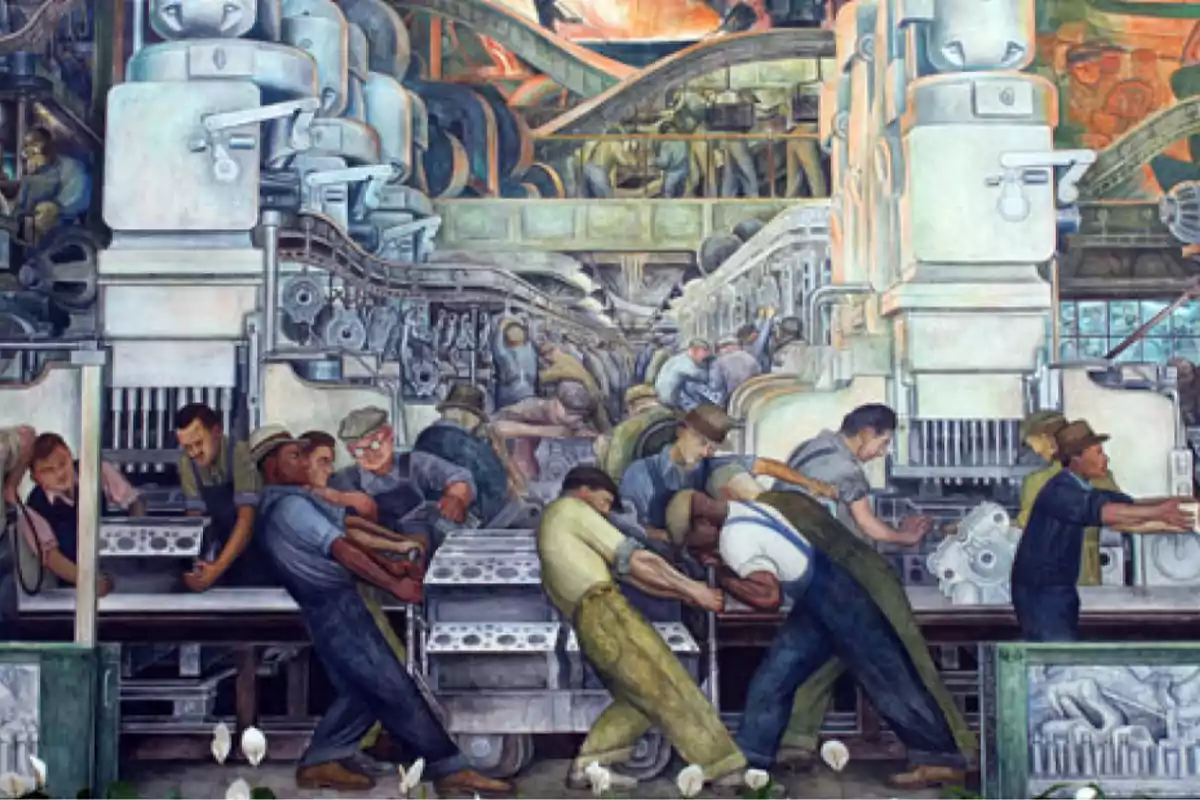Although it may not seem like it from its name, Fordism is an invention of Ransom Eli Olds, an American pioneer in the automobile business who designed and marketed the Curved Dash, the first low-cost automobile in history.
What is Fordism?
If we had to define Fordism in a few words, we would say that Fordism is a socioeconomic trend that takes its form from the pioneering mass production techniques in the world and remains relevant to this day.
It is named after Henry Ford, the founder of the Ford automobile company. The name was given by the Marxist theorist Antonio Gramsci, who in one of his books, "Americanism and Fordism," studied this way of understanding production and the economy.
Fordism is based on a new industry, in which specialization, division of labor, and cost reduction are paramount. This changed the way any market product was produced.
Previously, in companies, workers were responsible for making the product "vertically": from start to finish, the same worker made a product and controlled the production times (if it took a day to make a door, it took a day). Since the emergence and popularization of Fordism, the idea of an assembly line was established in which each worker performed a specific function and passed the more elaborated product to the next.
An example of Fordism
We can see it more easily with an example. Before, to make a door, the same employee (who was a craftsman) had to select the wood, shape it, embellish it, and install it. With Fordism, however, one worker picked the wood, another cut it and passed it to another who embellished it... until it was finished and another was responsible for installing it.
This is a "horizontal" production, in which each worker only has one function, so the production time was accelerated, and costs were reduced, allowing products to be sold for less money and more people to buy them. Which people? The many workers who became part of assembly lines during the first third of the 20th century.
In the movie Modern Times by Charles Chaplin, it can be seen perfectly. We leave you with this audiovisual definition of Fordism (seen from a comedic and bittersweet perspective)
Chaplin - Tiempos modernos
Fordism and Taylorism
But Fordism had a previous trajectory. It comes from Taylorism, a system promoted by the American Frederick Taylor. In an attempt at primitive Fordism, he devised a system for entrepreneurs to control production times.
Just like in Fordism, Taylorism tried to increase workers' skills through specialization, and production times were controlled (as we said) in the most scientific way possible. However, Fordism and Taylorism differ in many other aspects, especially in the consequences of these characteristics.
While Fordism increased the number of workers, Taylorism decreased the number of workers.
The same happened with wages: Fordism increased them thanks to performance bonuses, and Taylorism reduced them.
The most important innovations occurred by dividing and improving labor issues in Taylorism and Fordism. In the case of the former, they focused on the tasks of the production process and time control; in the latter, the work and the most productive time of the worker.
The crisis of Fordism
As you can see in Chaplin's video, Fordism involved a very high worker wear. Despite being very practical, employees working in this type of industry and factories ended up getting fed up. This was compounded by the arrival of other socioeconomic models: Keynesianism and Toyotism.
John Keynes was a brilliant British economist whose theories became very popular due to the Crash of 1929. Keynes said that the liberal economy did not end up solving all market crises and that the action of the "invisible hand of the market" depended on many other factors. That is, industry and companies were not guarantors of economic balance and workers' well-being.
He proposed a redistribution of the income of the highest earners through fiscal policies (taxes) so that workers would see part of what they made the entrepreneur earn returned to them through services.
But this was not the only theory that participated in the crisis of Fordism.
Fordism and Toyotism
After years of maintaining a production model that drove workers crazy, who felt exploited, Fordism exploded. Neither had Keynesianism solved the problems it had so accurately diagnosed.
To counteract the possible rupture of the pact between workers, entrepreneurs, and the state, in the 1970s, a new work philosophy that began to operate in Japan after World War II became popular. Fordism and Toyotism form two sides of the same coin; when one stopped working, the other proved to be a more than valid solution.
Toyotism proposed solutions to the problems posed by Fordism without having to rely on state policies like Keynesianism, something that was certainly not to the liking of companies and entrepreneurs who have always seen state and administrative interference in the economy as negative. The keys to Toyotism are as follows:
More flexibility in working conditions and more rotation between job positions
Social stimuli through the promotion of teamwork and cross-class identification between boss-subordinate.
Changing the way of understanding the business with production more adjusted to real demand. Lower production targets + greater freedom for the employee + elimination of storage costs = More satisfaction for the employee and the same profit for the entrepreneur.
With the reduction in production prices, sales prices are also reduced. Thus helping the economy to activate more, putting more money into circulation.

But, of course, for this system to be carried out, it needs a country or an economic environment with specific characteristics. Namely:
Production occurs if and only if there is demand. No excess stock is produced.
It works if and only if the "five zeros" are met: zero error, zero breakdowns (of production machines), zero delays, zero paper (maximum reduction of bureaucracy), and zero inventory (stock is not accumulated).
Diversify the products we sell. Not focusing on just one type. This is where it differs from Fordism.
Workers must be multifunctional to meet the previous point without excessive spending.
Produce what is going to be sold. No more.
Invest in machinery improvements to achieve that "zero breakdowns" goal.
This is all for today, in this review of what Fordism is; going through its origins and historical references, seeing what led to its collapse, and even which models replaced it.
Bibliographic References
Coriat, B. (2000). El taller y el robot: ensayos sobre el fordismo y la producción en masa en la era de la electrónica. siglo XXI.

